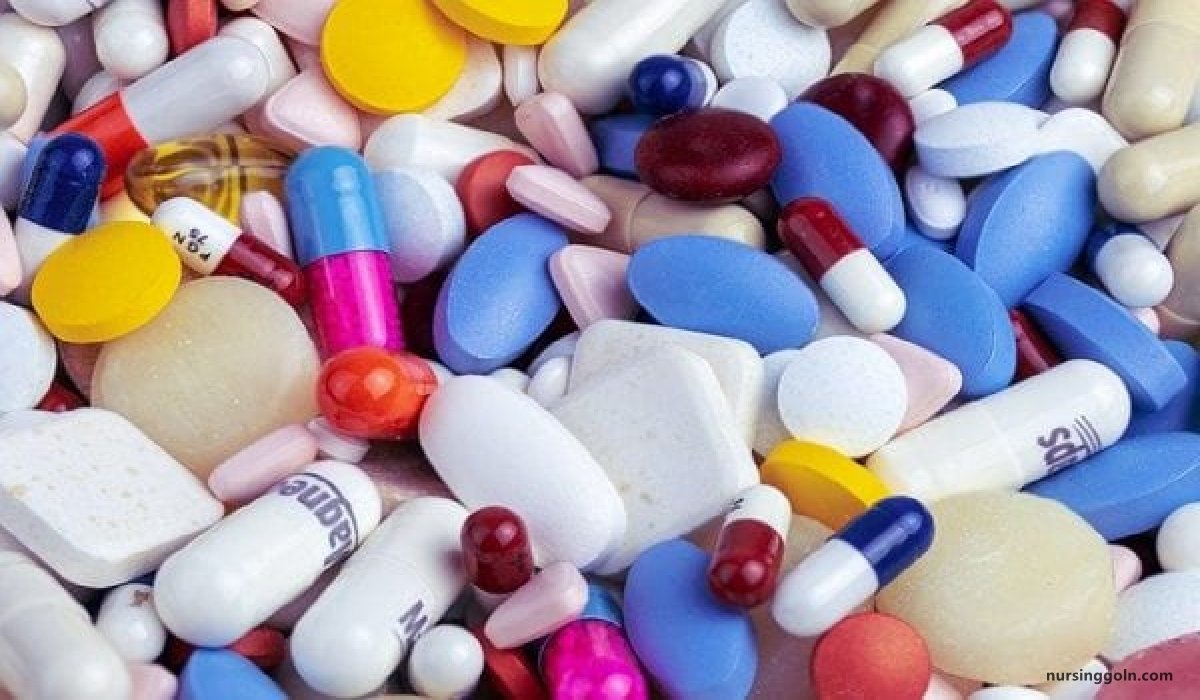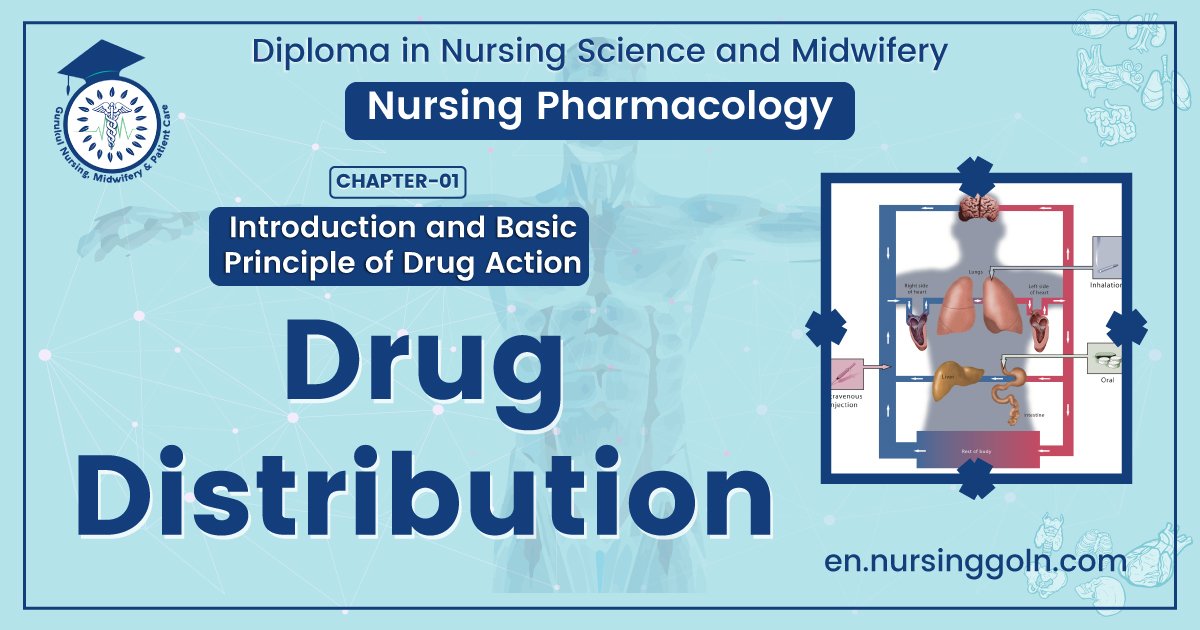Drug distribution – This book covers the entire syllabus of “Pharmacology” prescribed by BNMC- for diploma in nursing science & midwifery students. We tried to accommodate the latest information and topics. This book is an examination set up according to the teachers’ lectures and examination questions.
At the end of the book, previous questions are given. We hope in touch with the book students’ knowledge will be upgraded and flourish. The unique way of presentation may make your reading of the book a pleasurable experience.

Drug distribution
Some water-soluble drugs cannot be absorbed by the process of diffusion and also by filtration due to their high molecular size. So, they remain in the blood when given intravenously and thereby increase the osmolarity of blood, which intern retains the fluid & expands the plasma.
This is why they are called plasma expander. (Plasma expanders are colloid-containing solutions of various agents designated to restore plasma volume).
Properties of plasma expanders
1. Should be pharmacologically inert
2. Free of antigenic, allergic or pyrogenic effects
3. The plasma expander must have oncotic properties comparable to plasma
4. Should have adequate capacity to carry oxygen
5. Should be stable, easily sterilize and cheap.
Use of Plasma expanders
1. Preparations of organs for transplantation
2. Extensive burn (more plasma loss)
3. Gram negative endotoxic shock
4. Haemorrhagic shock
5. Cardiovascular bypass surgery

Plasma expanders are:
1. Albumin
2. Plasma protein fraction 3. Dextran 40, 70, 30
3. Heat-starch
Drug distribution:
Once a drug has gained access to the blood stream, it gets distributed to other tissues that initially had no drug, concentration gradient being in the direction of plasma to tissues.
The major compartments of drug distribution are:
- Plasma
- Interstitial fluid
- Transcellular fluid (CSF, synovial, pleural, peritoneal fluid)
- Intracellular fluid.
- Fat.
Drug distribution depends on following factors
- Lipid solubility
- Ionization at physiological pH (a function of its pka)
- Extent of binding to plasma and tissue proteins
- Presence of tissue-specific transporters
- Differences in regional blood flow.
- Drugs that are strongly protein bound, stay mainly in the plasma compartments so
- Lipid insoluble drugs are mainly confined to plasma and interstitial fluid. Most do not enter the brain.
- Lipid soluble drugs reach all compartments and may accumulate in fat.
- The distribution of drug is often uneven (unequal),
Movement of drug proceeds until an equilibrium is established between unbound drug in the plasma and the tissue fluids. Subsequently, there is a parallel decline in both due to elimination.

Causes of unequal distribution of drugs
- Plasma protein binding of the drugs.
- Tissue binding of the drugs.
- Redistribution or sequestration in the body fat.
- Blood brain barrier (blood CSF barrier).
- Blood placental barrier.
Read more:
